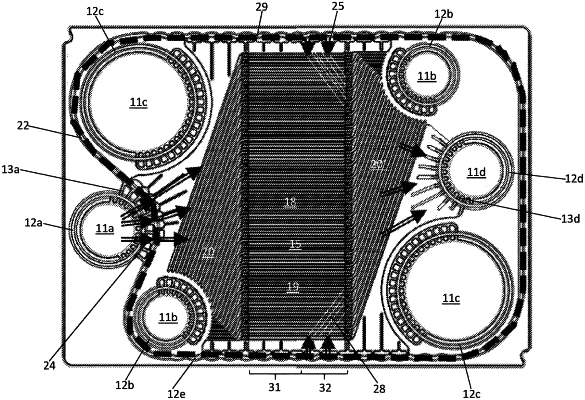| CPC H01M 8/0267 (2013.01) [H01M 8/0256 (2013.01); H01M 8/0265 (2013.01); H01M 8/0273 (2013.01); H01M 8/2432 (2016.02)] | 16 Claims |

|
1. A bipolar plate for an electrochemical system, comprising:
two separator plates;
at least one inlet opening which introduces a cooling medium;
an outlet opening which discharges the cooling medium; and
in at least a first of the separator plates,
an active region having first structures which guide a reaction medium along an outer side of the bipolar plate and second structures which guide the cooling medium along an inner side of the bipolar plate; and
a closed perimeter bead sealing off at least the active region, the perimeter bead extending around the active region and the outlet opening and defining a bead interior,
fourth structures connecting the bead interior of the perimeter bead to the active region such that the cooling medium flows from the bead interior to the active region, and
an interior flank of the perimeter bead sealing off the bead interior of the perimeter bead so that flow of the cooling medium from the bead interior into the outlet opening is prevented outside of the fourth structures,
wherein the active region of at least the first separator plate comprises:
a first section arranged on a side of the respective separator plate near the inlet opening, and
a second section arranged on a side of the respective separator plate near the outlet opening and arranged between the outlet opening and a front section,
wherein the fourth structures leading away from the perimeter bead are arranged between the perimeter bead and the second section such that at least some of the cooling medium flowing through the bead interior is guided past the first section of the active region and flows laterally into the second section.
|